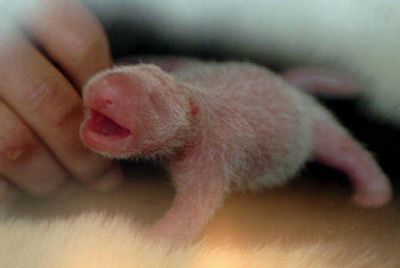Panda population on the rise thanks to efforts of Chinese

CHENGDU, China – Chinese scientists have logged a record number of giant panda births in captivity this year through improved artificial insemination techniques and better understanding of how the reclusive but universally appealing creature lives and mates.
The result of hard science by no-nonsense researchers, the increased birthrate is good news for the many children and soft-hearted adults around the world who delight in the sight of pandas, with their distinctive black and white fur, sitting back and tranquilly munching on bamboo leaves.
The pandas slouching about their compound here at the Chengdu Giant Panda Breeding Research Base in central China’s Sichuan province did not seem particularly moved by their species’ accomplishment. But at least 19 pandas were born – and have survived – this season in a pair of Chinese research facilities, officials said, the highest number since scientists here and abroad began trying to foster reproduction of the endangered animal through artificial insemination about 40 years ago.
Several more were born in research centers and zoos in other countries, including Tai Shan, a male cub who was born at Washington’s National Zoo on July 9 and is reported to be thriving. In all, up to 25 giant pandas were born and survived in captivity around the world during this summer’s birthing season, according to the State Forestry Administration and Chinese specialists.
A survey last year by the State Forestry Administration showed that the number of giant pandas living in the wild has also risen, to an estimated 1,590, up from 1,110 in the 1980s. Most roam the isolated hills of China’s Sichuan, Gansu and Shaanxi provinces, eating bamboo and staying as far as they can from human beings. The population has grown over the last several years, scientists said, because the government has turned large parts of the panda’s habitat into reserves where logging and farming are forbidden.
The panda, whose markings and chubby contours seem to invite cuddling, in fact is easily distressed by contact with human beings, research has shown, and it seems to thrive best when left alone among the bamboo stands of central China’s misty mountains.
Partly for that reason, scientists for years have had trouble getting captive giant pandas to reproduce. With a limited number of males to choose from in captivity, picky females often resisted advances, they found, and males in contact with humans at zoos and research institutes seldom seemed to show much ardor. Fewer than a third of captive pandas have mated naturally.
As a result, intensive efforts have been under way since the 1960s to breed pandas by artificial insemination. As techniques and knowledge improve, the artificial route has begun to show better results, particularly since the turn of the century.
The Chengdu facility’s director, Zhang Zhihe, held out the promise of repeating and perhaps improving on this year’s productive season in coming years. “Gradually, from year to year, we have begun to know more about giant pandas, their genetic makeup, their habits, their nutrition and so on,” he said in an interview. “And the more we know about them, the more we can help them reproduce.”